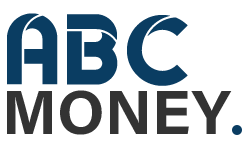What is the single biggest advantage that today’s investors hold over previous generations? It’s not living in an age of opportunity; other time periods have provided ample chances for savvy investors to make money. Nor is it simply increased networking chances – networking is certainly easier today than ever before, but that’s not the greatest change.
I’d argue that the single biggest advantage the modern investor holds is the immense wealth of information at his fingertips. This may seem self-explanatory – of course, we know more than ever – but we’re going to narrow it a little further. How does modern software take advantage of that information to help investors manage their portfolio? We’ll look at four ways in particular. This is not a review of specific software products, though we may mention some in the course of the article.
Software Curates Information
The first point is slightly counter-intuitive. Software helps manage a portfolio by limiting information. That is, after all, what a curator does. He selects certain aspects of an art collection to display, or particular shows to air – increasing the value of the overall exhibit by limiting the number of pieces shown.
Any random Google search of “investment,” “how to manage your portfolio,” “investment tips,” or any similar terms will return hundreds of thousands of pages about how best to manage your portfolio. It’s easy to get inundated with so much big-picture information that it becomes impossible to make accurate decisions. The problem is not limited to the strategic level. An active investor may have a dozen different portfolios on different websites and platforms, all with their own unique formats and available tools. Just learning the intricacies of each one can be a job itself!
A good software program helps to limit the total amount of information available, filtering out excess information or even false information to provide the investor accurate information needed to properly manage his investments.
Software Centralizes Investments
How does good software curate information? Largely by centralising it. This is where software like Personal Capital and Mint come in. These are meta-level programs, bringing together information from as many online investment and financial management tools as an individual has, and centralizing them under one virtual roof. No need to open a dozen different programs at one time just to get a snapshot of your portfolio and expenses; open one program, and see the entire picture.
Centralizing your portfolios provides a level of convenience that encourages further investment. There’s no need to limit yourself to one or two online brokers so you can stay on top of things. The overall ease centralization provides encourages more tinkering with your portfolio, more examination of strengths and weaknesses.
Software Informs Investors
First, software curates and filters information about your portfolio. Next, it can centralize that information. Having done those things, software then works to provide good information that leads to analysis. Good management software allows an investor to see the big picture when needed, and zoom in to the small details as necessary. It can provide general information on how your assets are allocated, what your cash flow looks like, and how retirement planning measures up. On a smaller level, software enables all the “simple” tasks, in real-time, which used to be done by mail or in person. The performance of particular investments, tracking individual portfolios as part of a bigger one, and a host of other information forms the basis for investors to make wise decisions about their overall portfolio.
Software Opens Opportunities
Finally, software opens opportunities. We’ve looked at some already – opportunities to use portfolio management software to see big-picture strengths and weaknesses and adjust as needed. That’s only one opportunity among many more. Take one sector, real estate, as an example. Tech-based investment platforms like Fundrise allow smaller investors to jump into real estate, while CRM software facilitates the interactions between the real estate investment firms and their investors.
The four ways we’ve looked at today operate on a big-picture level. Above all, software empowers investors, allowing nearly anyone, with large or small portfolios, to improve their investment strategies and overall positions.
Check out useful resources from the best webinar platforms to build a solid portfolio.

